The Article
Yamaha’s MCRN870D mini system: HIDDEN DEPTHS
21st July 2016
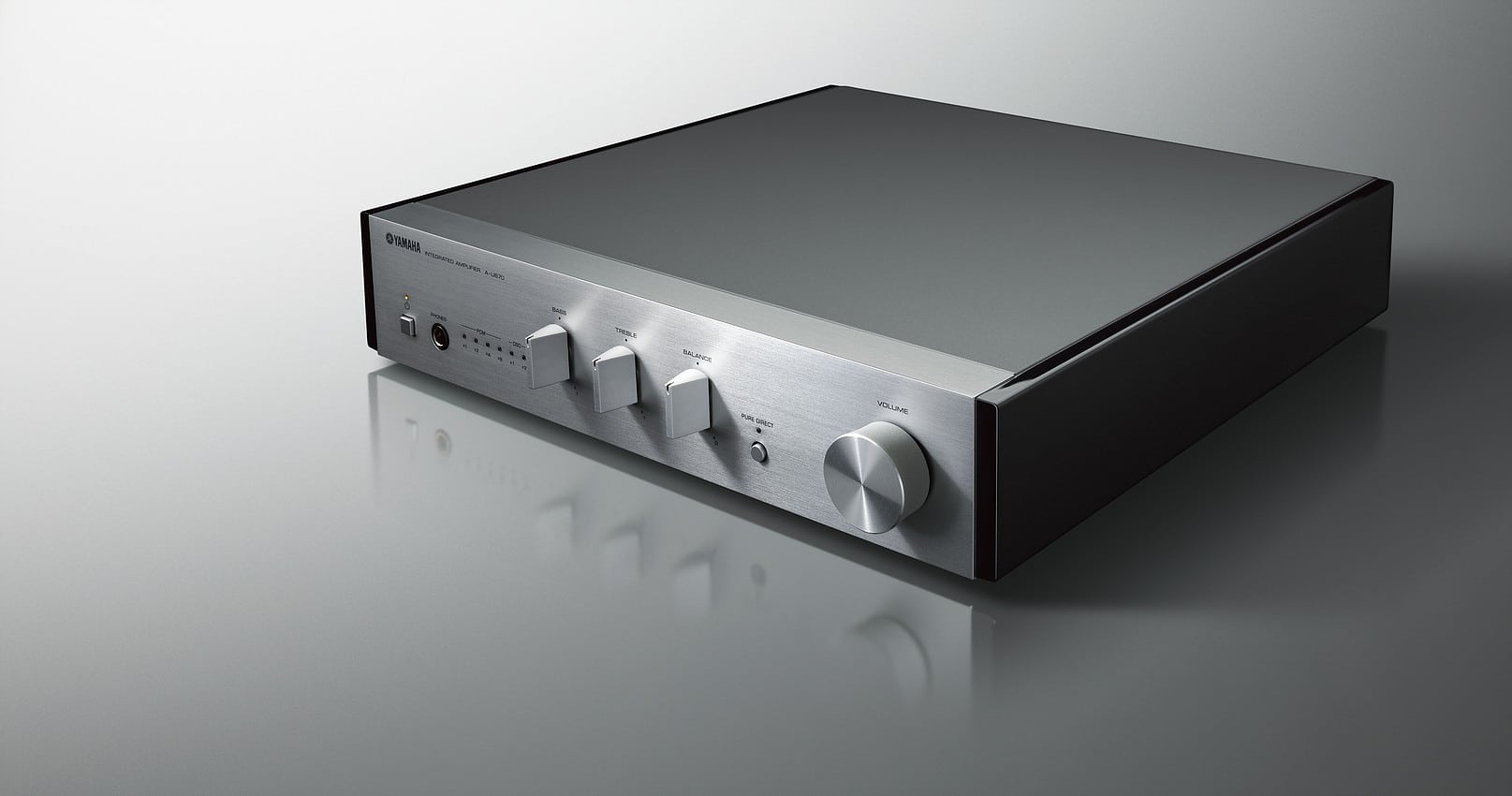
Part of the larger Yamaha MCRN870D mini system, Paul Rigby unplugs the AU670 amplifier and CDN670D Network CD Player and reviews them as separate items
What is the point of a mini system? After all, I’m here to talk about an amp with another box of digital sources that costs around £750 in total. You could buy yourself a perfectly respectable Cambridge Topaz amp and CD player for under £400, after all. Well, the reason has got a lot to do with convenience, a larger feature count and integration. As you will see, the Yamaha system is packed with facilities, is designed to work together as a single unit, has a nicely finished and matched look that is slightly nostalgic in its fascia design and is sized to fit into most small spaces.
The 70W amp, on its own, has enough facilities to be usable as a single entity. Apart from the power button and tone controls (very 70s), it also offers a Pure Direct button to bypass these tone controls in sonic terms, a volume knob, a headphone port for the built in headphone amp plus PCM and DSD lights for digital play (although, they come with a twist, which I’ll address in a second). The rear offers a single set of analogue inputs, a USB port (Type B), a port for a possible subwoofer, ‘proper’ speaker terminals plus the built in power cable. There is also a System port in which you plug in an umbilical cable that also connects to the Network CD Player: the other main bit of this mini system. This allows the remote control, that arrives with the Network CD Player (NCP), to control both boxes. It also allows certain controls present on the NCP to change features on the amp.
For example, although the amp has those digital playback alert lights that I mentioned above, the input selector for them is present on the NCP, not on the amp as you might expect. An odd choice but, on reflection, one that may just benefit sound quality. This does mean, though, that your listening options are restricted if you wanted to use the amp on its own. That is, on the amp alone, you can hear music from an external CD player or a third-party turntable but not via that built-in USB port, you need the input selector for that and, as we now know, that sits on the NCP.
The NCP, meanwhile, bristles with features. Yamaha might call it a Network CD Player but this box is more of an ‘Entertainment System’ or ‘Hub’. It includes Sabre 32 DAC support of DSD files to 5.6MHz (DSD128) format or 32bit/384kHz PCM playback, DAB radio, Internet radio, USB port for portable USB drive sticks, Bluetooth/AirPlay/MusicCast (Yamaha’s own Bluetooth system) support, NAS external storage and an Ethernet port.
The front of the NCP includes that external USB drive slot, power button, disc tray for CDs, indicators for Bluetooth/Wi-Fi, the usual CD transport buttons and that essential input knob.
The rear sees a radio antenna port, Aux In, Analogue Out, a System jack umbilical cord socket to connect to the amp, Ethernet, Wireless antenna and Digital In. Like the amp, the power cable is fixed to the chassis.
To dwell on the Yamaha design decision here, you would think that an integrated amp on a mini system would be the unit that would hold all of the facilities and the NCP would, well, play CDs only. That’s not so and, if you wonder about that design quirk, there’s a good reason for it. The less amplified electrical imposition on delicate features such as radio, digital sources and the like, then the lower the overall noise interferance. Stripping away most of the features from the integrated amp and placing them elsewhere can only be a ‘good thing’ for the mini system as a whole in terms of final sound quality. That is, Yamaha has performed a measure of isolation here, distancing most of the audio features from the power supply.
Hence, the amplifier can be utilised as an integrated amp but it’s more of a basic pre-amp with an added power amp combo. Most of the interesting stuff is resident on the NCP.
That’s the essence of mini system then but I couldn’t help but be awkward.
Yes, it’s a mini system and mini systems are traditionally seen as single entities and I will review it as such, never fear. Some mini systems, of course, will only work at all if you have all of the components fitted together and plugged in. This one gives you a bit of leeway because you can, if you want, buy the amp and then upgrade it later by adding the Network CD player. You’re not really supposed to but I’m telling you that you can. Ideal if you are short of cash.
What I’d like to do, then, is to look at the amplifier first during the sound tests then add the NCP later. You can already find another review HERE where I address the matching speakers that also fit into this mini system but they also can be bought seperately. The NSBP401 speakers cost an extra £350. If you buy these speakers plus these two boxes (the NCP and the amp) at the same time, then you get a discount and can buy the lot for just under £1,000.
So, the amplifier was first up for a sound test. Showing proper respect, I decided to compare the amp section to another seriously budget audiophile amp, blowing the dust off my trusty, veteran Cambridge Azur 651A integrated. A quite superb budget design that initially hit the shelves for around £350-£400. So, a realistic comparison with this dinky Yamaha.
SOUND QUALITY
I started the sound tests with the amp as a stand-alone unit and, with the Pure Direct button ‘on’ (very important that) plugged my turntable into it while linking up a pair of Acoustic Research speakers. Playing a slice of Depeche Mode and the track, Enjoy The Silence from the album, Violator, I was struck, not by any stark differences between the Cambridge but the similarities. One of the big giveaway issues with amplifiers at this low price point is a temptation to push a hard, harsh bass into your face to [cough] ‘impress you’. This effect tends to up the stridency of the midrange to give you overly clinical detail. The problem with this is that, after 20 minutes listening, you can’t take any more as listening fatigue sets in. You suddenly realise that the garden needs attention or you really must go and buy that bottle of milk.
The Yamaha, like the Cambridge, doesn’t suffer from this classic budget mini-system issue. Instead, you are provided with a broad soundstage and a slightly increased midrange precision. There’s no brightness here but there is an extra element of focus. This is not a bad thing because the Azur offers quite a soft focus presentation that is sweet and pleasant and cuddly. The Azur has a big, cloudy, floating soundstage whereas the Yamaha’s is more well-defined and crisp. The Yamaha gets down to business with its forceful and powerful lower frequency response that offers enough beneficial low noise response to extract quite subtle details, sitting at the back of the master. On this track, the subtle percussive details, as the track rolls along, are impressive and easily targeted by the ear. The latter results in quite a rich and involved presentation that has the ear bouncing from one instrument to the next.
Playing Bing Crosby’s Swanee on CD, via my Leema CD player, complete with a jazz quartet fronted by the piano of Buddy Cole, I was impressed by the intimate nature of the Crosby vocal which, because of the precise nature of the Yamaha’s presentation, focused on the close mic approach to the Crosby delivery. Such, indeed, was the attention to detail that you could easily discern Crosby’s intake of breath before he delivered each line which enhanced the intimate nature of the song. The percussion, via Nick Fatool, was clear, detailed and surprisingly characterful while Cole’s own keys never infused the rest of the soundstage with the sort of bloom that you often hear via lesser amplifiers, such is the often chaotic nature of the dynamics from the piano.
I then plugged in the Network CD Player and continued with the Crosby tracks. As you might expect, the Yamaha CD player didn’t have the same sonic qualities as the Leema. No surprise, the Leema is twice the price of the entire Yamaha two-box product and the Network CD Player is only partly a CD source, don’t forget. Hence, the actual budget assigned to the Yamaha CD player section alone will only be a fraction of the overall £350 price, if you think about it.
Hence, the CD output didn’t quite have the dynamic reach or the expansive soundstage or even the detailed insight that the Leema could offer but, that said, the Yamaha CD player offered a good solid playback for the price. Vocals were relatively emotive, bass was strong and punchy while the midrange, enhanced and accentuated the precision of the presentation.
Plugging in my SSD-powered MacBook via the NCP’s USB port and playing Harry “Big Daddy’ Hypolite’s Big Bad Girl at 24bit/96kHz I was happy to hear how the focus and precision of the Yamaha took control of this big, bold, guitar playing blues shouter. There was a slight hardening of the vocals at a higher pitch but, in the main, the focused detail was a joy to experience. Actually, I don’t really blame the Yamaha for this hardening because my MacBook was busy ‘being a computer’ which adds unwanted noise to the source. The guitar was satisfyingly metallic and cut through the vocals like a grammatical knife while the Hypolite performance provided plenty of space and air for expression and emotion.
To introduce a purer, higher quality source, I plugged in my Astell & Kern AK120 into the Yamaha via the optical port but still challenged it by playing a relatively bright master of Money For Nothing from Dire Straits at 88.2kHz. The AK120 itself naturally curbs this track’s brightness because the high quality guts of the player can handle the cutting dynamics. You still hear the essence of the strident master but it no longer bothers you as much. The Yamaha proved, on this track, just how transparent it is to sources because it sounded wonderful. Full, rich, detailed and powerful in the lower frequencies. Via the Yamaha, the bright master is still there, you can hear it during Mark Knopfler’s vocal and guitar crescendos but the high resolution source is handled superbly for a system of this price point.
Proof of the pudding was playing Bob Marley’s I Shot The Sheriff at 24bit/96kHz. A beautiful render of a great song featuring a wide soundstage, with all instruments clearly visible to the ear, tight and characterful bass with even subtle textures from the Hammond organ a particular highlight.
CONCLUSION
This pair of boxes should really be seen as a mini system only (that’s how Yamaha would prefer you look at the twin boxes) but I have had many queries from users who are either just getting back into vinyl or are new on the scene. The question I often hear is, “If I get Turntable X and Speakers Y can you recommend Amplifier Z?”
Well, this Yamaha mini system now extends the choice. It’s a choice that is not for everyone out there, I’m fully aware of that. That said, if you wanted to, you could do this. Buy yourself your new turntable and speakers (maybe the Yamaha speakers mentioned elsewhere) then buy the amp portion of this mini system. Use it as a very basic amp first and then later, when you have the cash, add the Network CD Player box. The CD player will use the amp’s only set of RCA inputs but the Network Player chassis also arrives with a spare set of RCA ports. So you can plug your phono amp into the Network Player instead and run your deck from there. At that point, you will then be able to retain your turntable set up but also extend your facilities to include CD, radio, external storage and more in one fell swoop and using one single and quite elegant looking box.
What happens, though, if you’re not interested in vinyl? For CD-based users who might use the amp as a part of an external CD-based hi-fi chain, the additional Network CD Player box is bristling with so many extra digital facilities that you could easily ignore Yamaha’s CD section, use your own superior CD player and just utilise the gamut of additional Yamaha digital facilities on offer.
That’s the feature bit. In terms of sound quality? I can’t fault it, for the price: with Pure Direct engaged, that is. With Pure Direct set to ‘off’, the system sounds veiled and harsh. With Pure Direct ‘on’, the amplifier as a single entity still sounds solid state in its musical presentation but is never hard or nasty. Instead, it utilises solid state’s best aspects by giving you precision and focus. The low noise aspect of its design prevents even a hint of stridency or brightness.
Joined by the Network CD Player, this Yamaha mini-system shows just how transparent and honest it can be. That is, give it a poor quality source and second rate hardware and it’ll give that quality back to you in spades. Feed it with a top quality source and you have to work out how to smile wide enough.
Bottom line? I hate mini-systems. I love the Yamaha mini system.
YAMAHA AU670 AMPLIFIER/CDN670D NETWORK CD PLAYER
Price: (AU670 amp) £359.95 ; (CDN670D CD player) £399.95
Web: uk.yamaha.com/en
Tel: 01908 366700
GOOD: pure direct feature, innovative design, feature count, focused midrange, transparency
BAD: nothing at the price
RATING: 8
REFERENCE SYSTEM
Rega RP3 turntable
Cambridge Azur 651A integrated amplifier
Apple MacBook
Astell & Kern AK120 digital player
Acoustic Research Radiance One Speakers
Black Rhodium cables

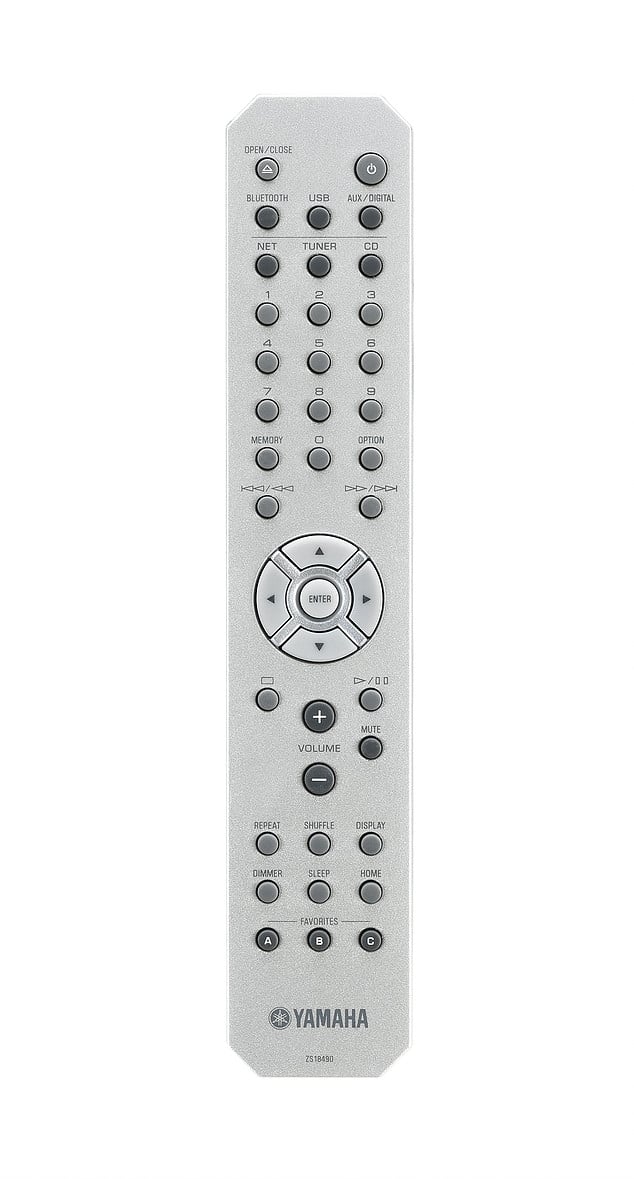
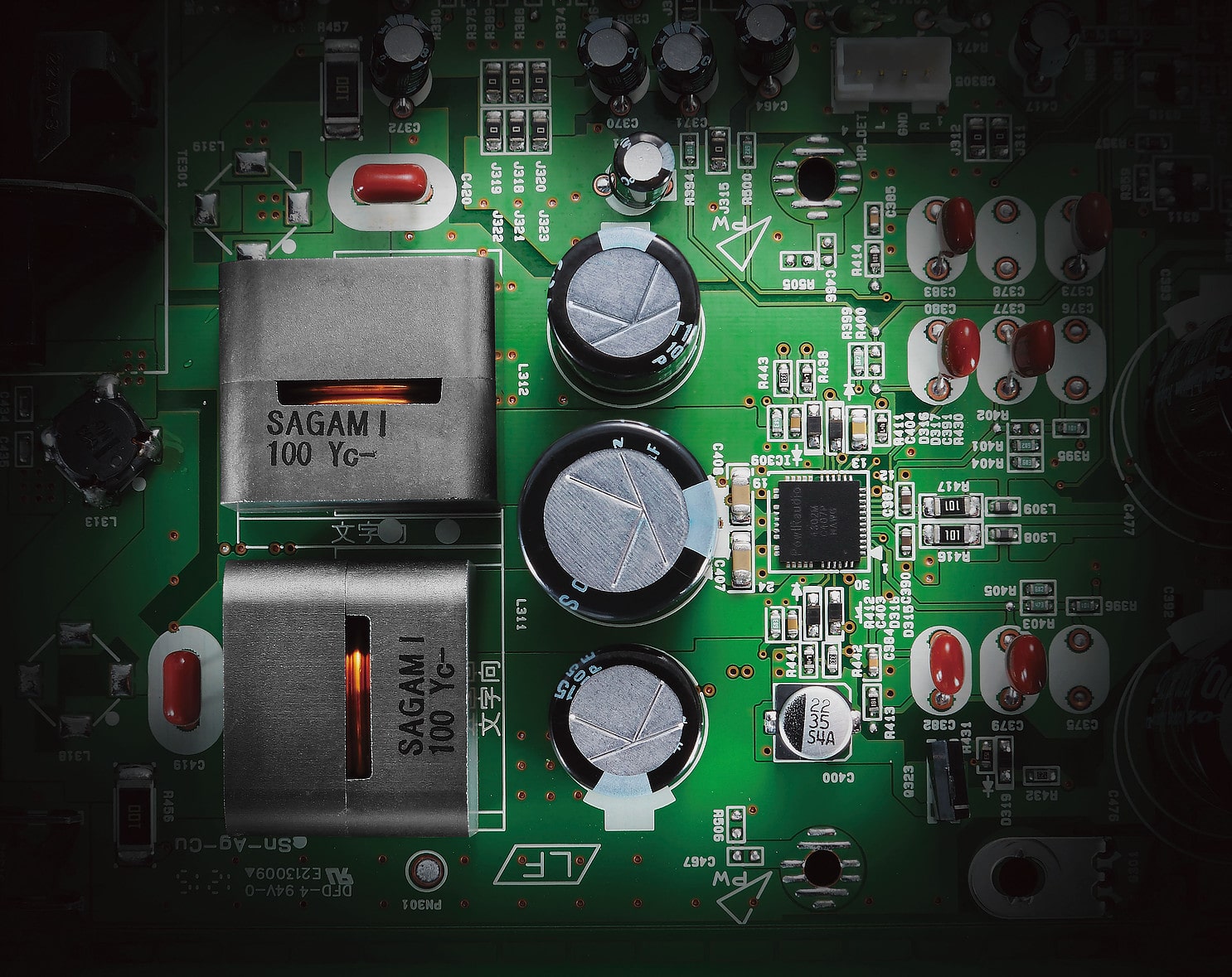
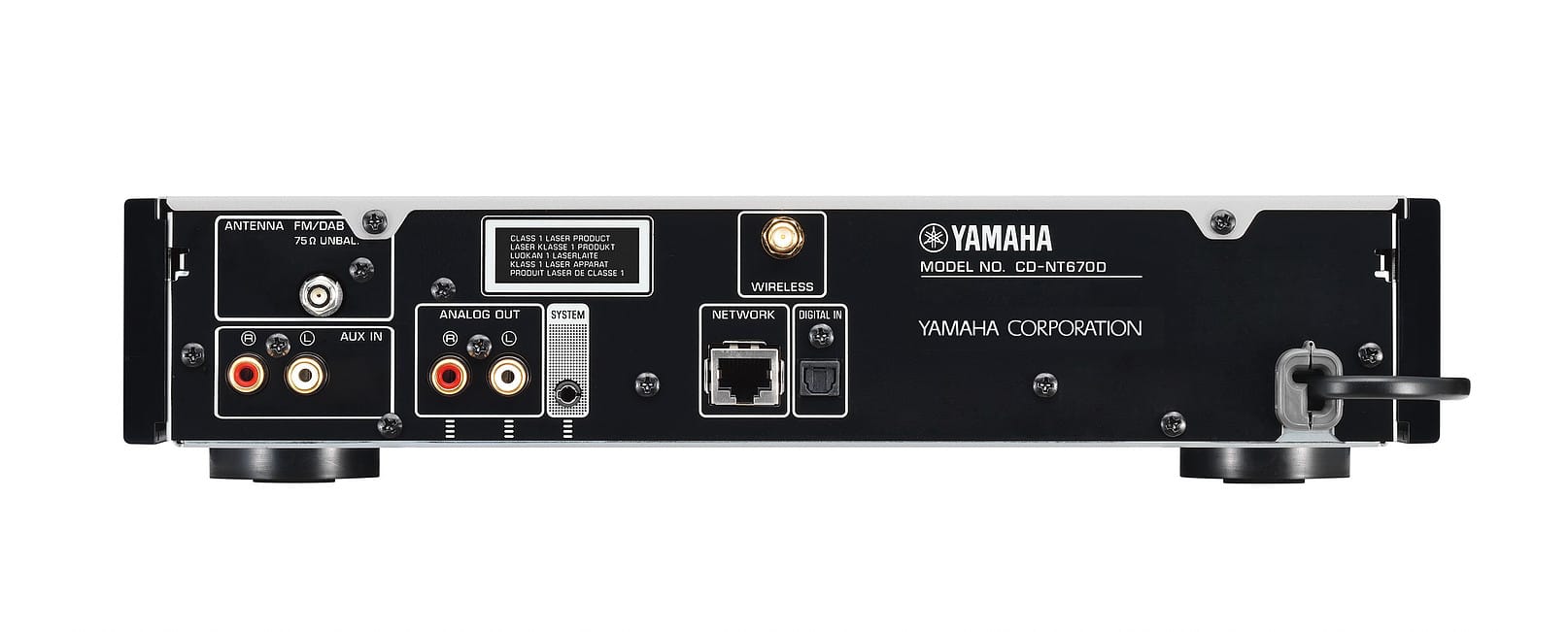
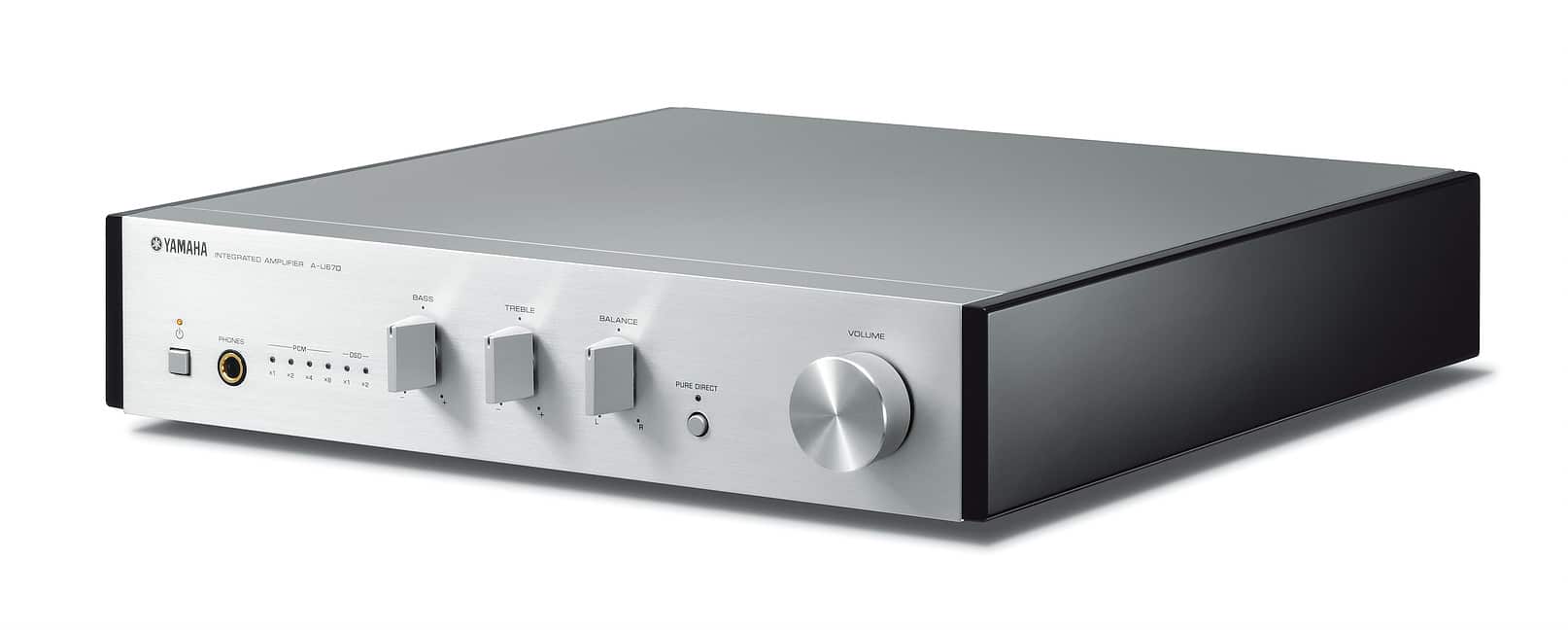
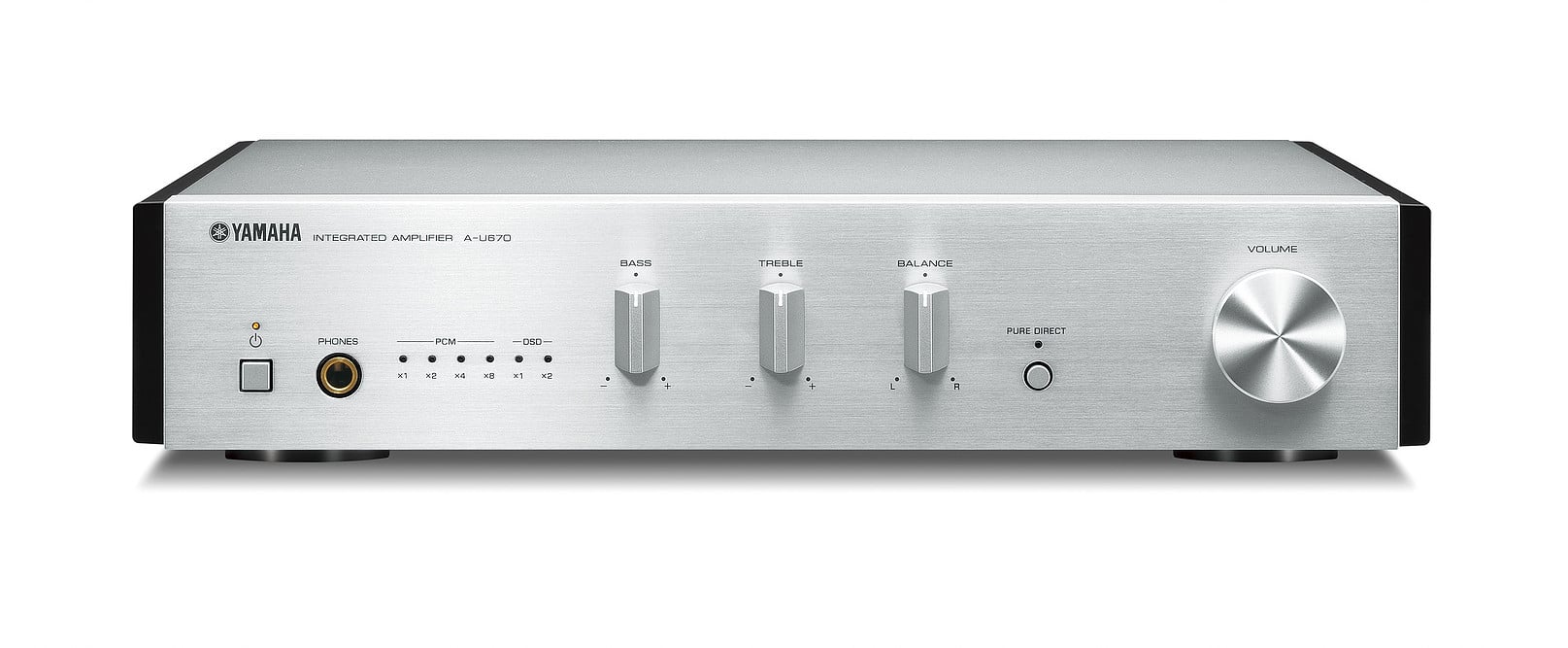
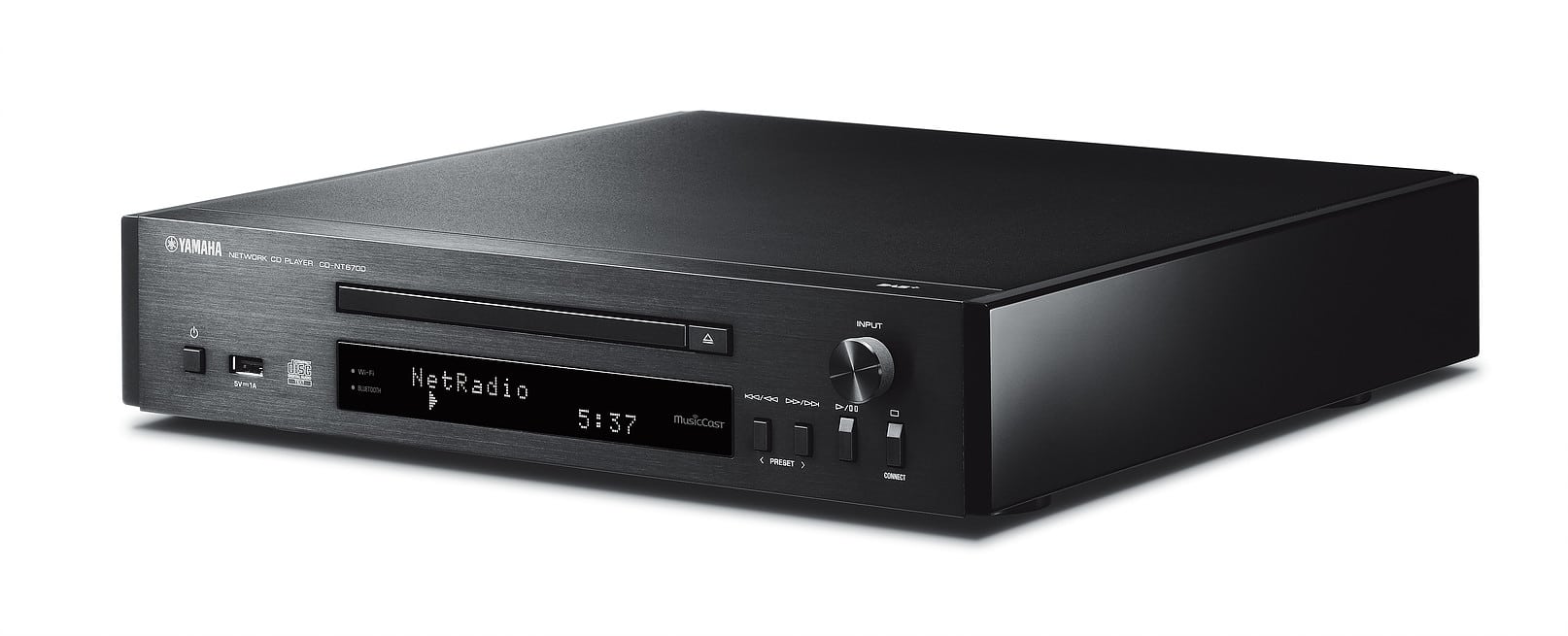
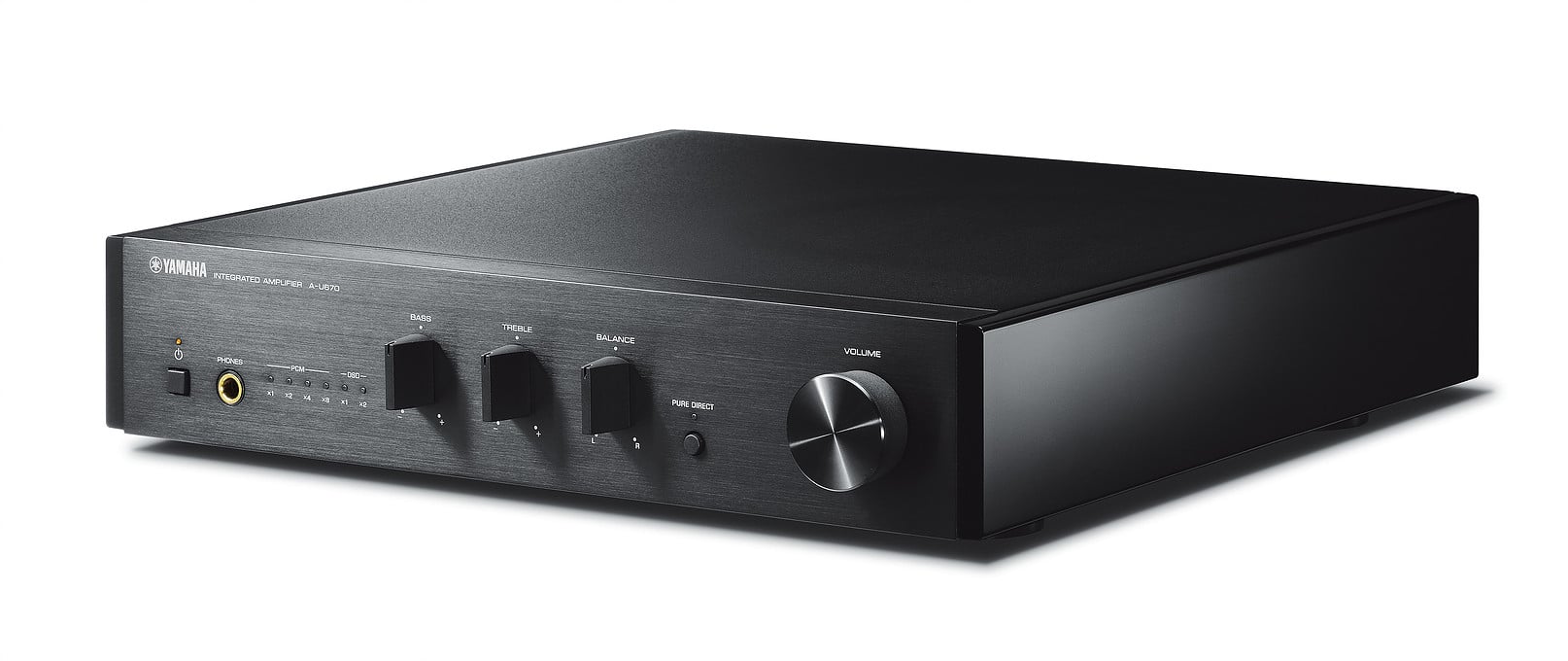
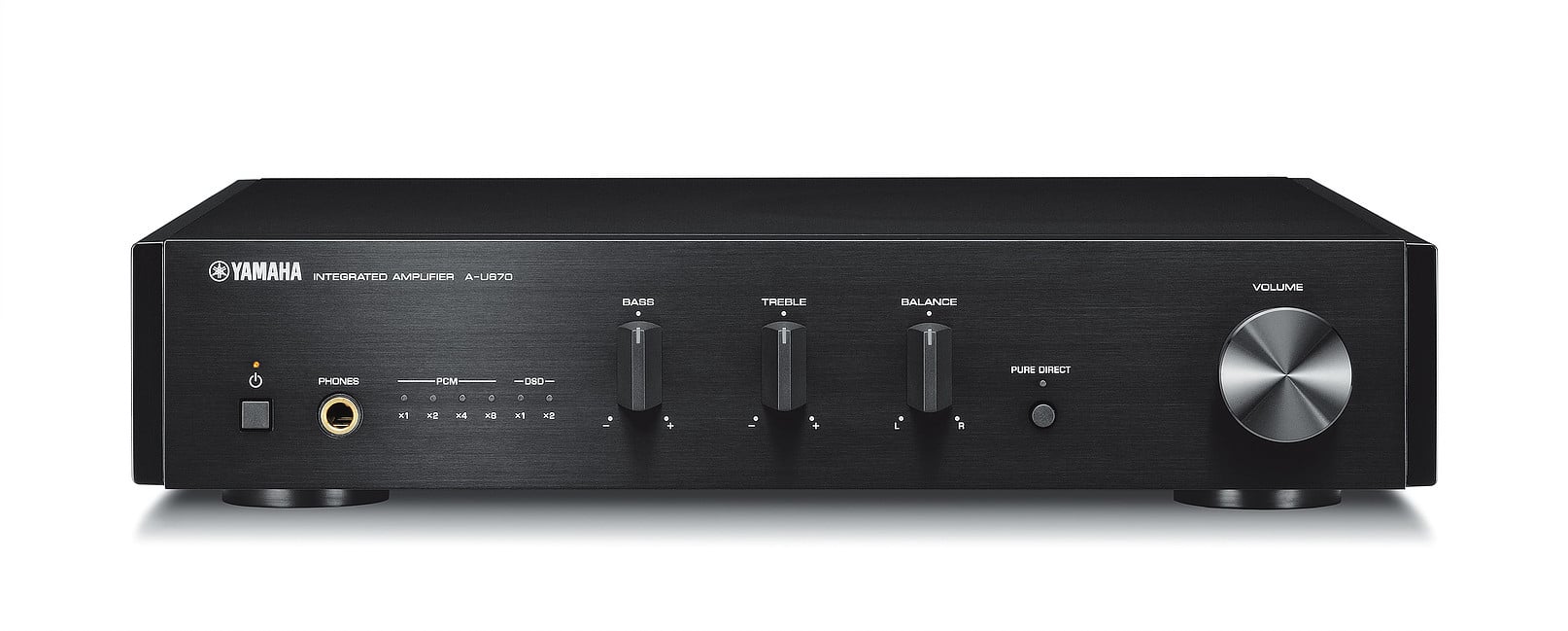
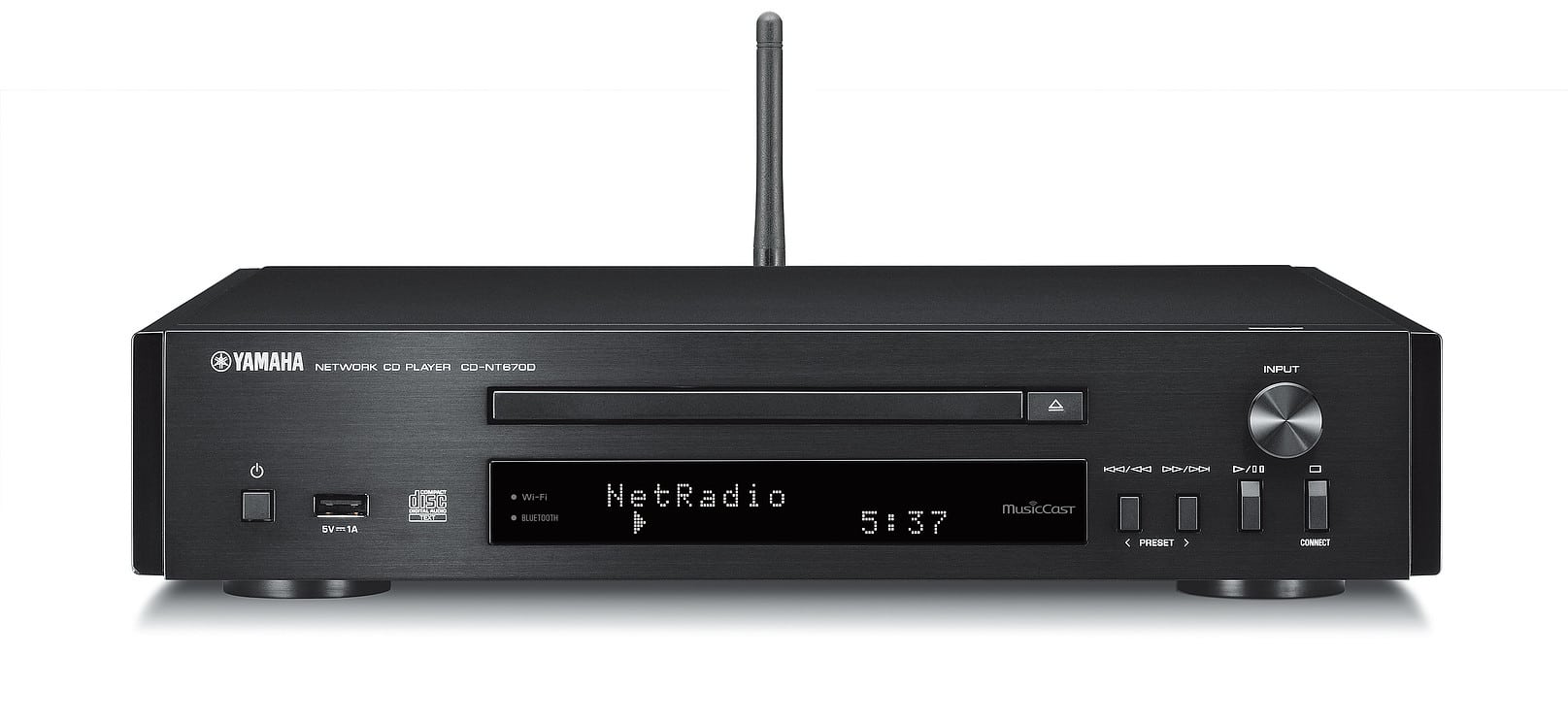
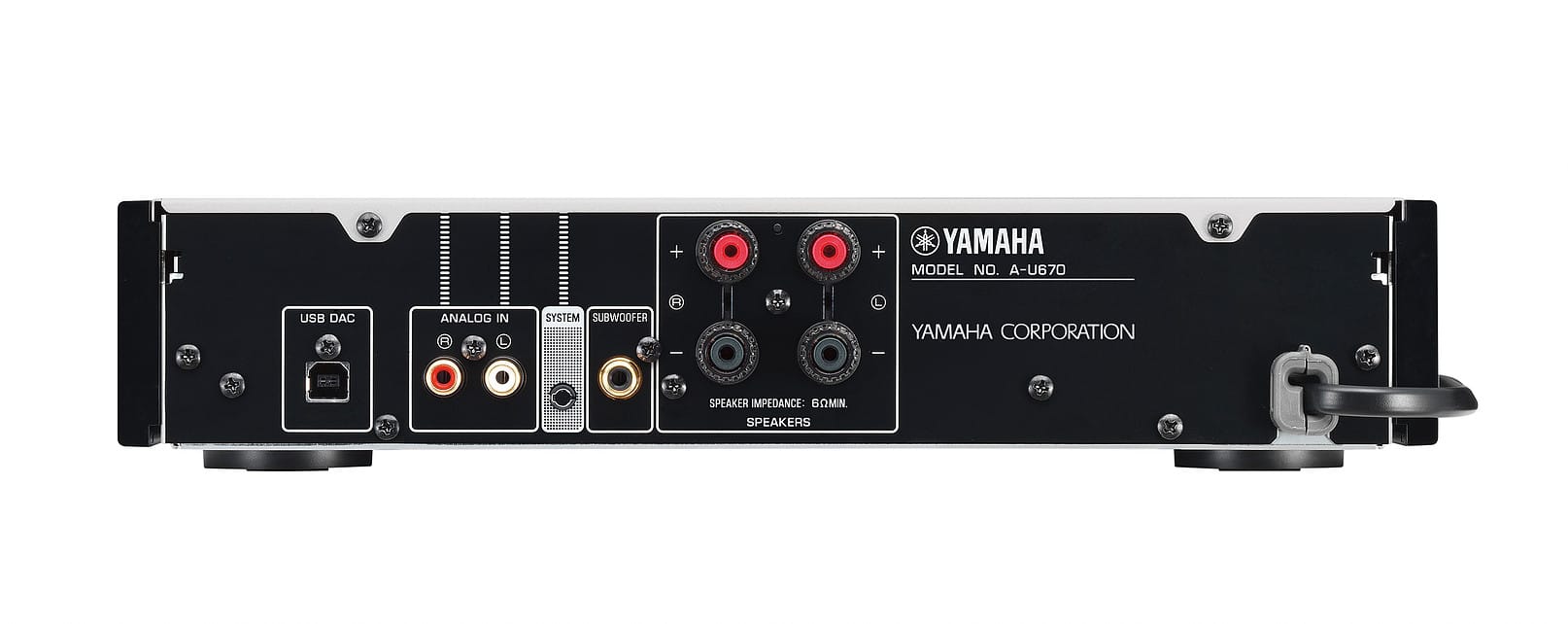



Hello Paul, thank for the review.
What mini system in the yamaha 870’s range of price could you suggest for pure CD listening ?
I also like dedicated trebble and bass buttons.
BR
Hi Bian – for that combo price which is, what, around ¬£700? I’d look at a Ruark R4, if you already have speakers the Marantz Melody is worth a look, the Cambridge One is a budget option.
Hello Paul,
sorry I forget: “what alternative to mini system”: so an amplifier, a CD/Flac/WAV/MP3 palyer and speakers. I do not use streaming or other online music. For the price: let’s say ¬£800-900. Thanks for your reply, but I’m not kind with the look of Ruark R4, Melody or Cambridge One. I would prefer a kind of separate box with “huge” volume button.
BR
Hi Brian – no turntable then?
No. Most of my music on CD, and let’s say 40% on WAV/FLAC/MP3.
That being the case, I’d encourage you to save a bit more and go for a transport:
https://theaudiophileman.com/6000cdt-cd-transport-from-audiolab/
plug that into the DAC of this amp:
https://theaudiophileman.com/6000a-integrated-amplifier-review-audiolab/
and then attach these speakers:
https://theaudiophileman.com/3020i-q-acoustics-speakers-review/
Grab some QED cables off Amazon and you’re done.
All in all, a great sounding system.
I will have a look at your proposal.
Thanks a lot
BR
Hi Paul, I hope you are well. I’m Justin from Hong Kong. I like your articles very much, but I’m a layman of these audio machines. I’m planning to buy my mom the Yamaha mini hifi system for Christmas. I’m aware that there’s another option by Onkyo CX-N1075QX2. May I have your advice on this please? Or you have other suggestion? Many thanks.
Hi Justin – well that’s a tough one because both systems are pretty similar in terms of spec, if memory serves… Also, I’ve never heard the Onkyo up close so can’t vouch for its sound quality. That said, Onkyo is known for its good quality amplifier modules so there is that and the networking system is different I believe. But when it comes down to it, I would look for the best deal on this one. Sorry I can’t help any more.
Hi, anyone had this “Not Connected” displaying when using it as USB DAC with computer as source?
It shows for me every time, even though everything works. Music playing, connected through WiFi (WiFi led light green). It works, but shuts down after a while, because it thinks I am not connected even though I’m listening to music. Very annoying, must be a bug.
That is something I see on my 870D too. The weird thing is I remember it used to display the frequency i.e. 44.100 kHz when I first tried it. Not sure what has changed that behavior and since when.
For the sake of completeness: I once figured out the issue is gone if I connect the laptop without its power supply (thus battery powered) – the problem seems to be the power chord ground loop leading to either some i.e. “50Hz humming” interference or differential voltages. I looked for a suitable galvanic separation of the USB connection but those supporting the required USB2.0 *high*speed are ridiculously expensive and there’s no guarantee they really separate the ground (it might i.e. just be separation of the data lines). I did never investigate that further, if someone found a solution in the meantime or has some other explanation/solution please let me know.
Hi, Paul! Thank you for your review on this system! I plan to buy some audio gear for this Christmas and after a long research the finalists are here: This Yamaha 870D and Naim Mu-so2! I know, I know they are enough different systems to consider this comparison almost absurd, but…since I do not have a chance to listen to them prior purchase, musicality, sound stage and clarity wise which one would you consider sounding …better! (and you may disregard the difference in price and design)
Thanks,
George
Hi George – in sonic terms? The Naim. For a low foot print? The Naim. The Yamaha does offer excellent flexibility though and can be found at a much cheaper price.
Thank you Paul for the swift reply! This will help me in taking the right decision…or not! :))) I am torn between the two! Naim was my first choice, I also took a peek at B&W»õs Wedge and then given a second thought on separate speakers, flexibility, classic appearance / design most suitable for me and my wife… ( we are in our sixties almost!)
This wireless craziness…I don’t like it! Wired is always better, always will be!
Hi Paul – great review, thank you for the write up!
Given we’re approaching the end of 2021, would you still recommend this system?
I have a Yamaha Musiccast 50 and wanted to upgrade my home setup by buying this system for my living room and moving the 50 to the kitchen…
Knowing that I listen mainly to Spotify and vinyls, would you have another, more up-to-date recommendation for a system costing below 1500? To be honest I’m a bit lost making this step from “all-in-one-box” to an actual hifi system…
Are you looking for a compact system? Would you like to go for separates? Do you need an all-in-one perhaps or a half-way house between all-in-one and a separates system? And is that 1500 pounds or dollars or something else?
Not necessarily a compact system, just the best I can get with my budget! I already have a turntable, and actually like the idea of separates that can be slowly upgraded with time.
My starting point was this Musiccast 50 that I already have and would ideally like to keep in the same network if possible, hence my preference for staying with Yamaha (except if you tell me it’s not a good idea).
I checked other options and now consider as an alternative the Yamaha R-N803D coupled with a reasonable pair of speakers (I’m thinking of the Klipsch RP-500M but any recommendations are more than welcomed). Then later I can buy a separate CD player.
As for my budget it’s about 1500 USD (sorry for forgetting the unit), so not much for audiophile level but I would expect to get something reasonably satisfying for an amateur such as myself.
So what would you suggest?
What turntable are you currently using, Sylvain? What sort of music do you like and do you look for bass-heavy sound signatures, do your ears search out fine detail…what are your preference?
Nothing fancy, the Marley Stir it Up (wired) turntable.
As for music I rather enjoy fine details, I listen to jazz, classical music or things with atmosphere like Trip-Hop. So no exaggerated bass, but still something that sounds full and present when needed.
If you’re going to $1,500 then I would recommend a turntable upgrade. So, a turntable, external phono amp, integrated with streaming included, speakers and stands plus cabling. How does that sound as a basic framework? Or were you looking at another type of set up?
Hi Paul,
Given my answers to your questions do you have any specific recommendations then? Integrated Amp with streaming capabilities (Yamaha R-N602?), speakers and turntable?
Yes but please be patient while I try and find the time to dedicate to your issue. There’s no need to send multiple questions on the same subject.
You may look at the Rega Planar 1 for around £275 or so or the Pro-Ject Debut for a similar price (the Audio-Technica LP5x is also recommended but slightly dearer at around £369), Rega Mini Fono phono amp or Pro-Ject MM Phono Box for under £100 each, the Cambridge AXA35 offers a good amp while the IOTAVX SA3 also includes Bluetooth for streaming. The Q Acoustic 3020i speakers for under £200 are highly recommended. I would look to secure your vinyl system first by adding speaker stands and, if possible, hifi shelving and decent cabling (QED are good value via Amazon) before you dive into streaming. A separate streamer from the likes of Bluesound Рthe 2i perhaps? Рwould be a good move in the future and the separate chassis would help to lower the noise floor.
Hi Paul,
Great, thank you for the custom advice! Now I need to find a retailer and do some more research but you put me on the right track, highly appreciated 🙂
Hey Paul,
I’ve stumbled over you review while doing some research in trying to replace my (not so) old stereo in the office.
As of now I am using a Yamaha PianoCraft 810 (Receiver is the RX-E810 together with the original speakers) in my office at home. Unfortunately this thing died and cannot be turned on anymore. So I was looking into my options: Either repair the old fella or get a more modern upgrade. My first stop of course was the Yamaha Website checking out the current PianoCraft models, as I always was pretty happy with the current system. I was a bit surprised that they are currently not offering a single system in the PianoCraft line. And after some research on the net I found the MCR-Nx70D models and their corresponding pages on the Yamaha website — all saying: “is not sold anymore”. My local shops and online retailers still have them.
Facing this situation I thought maybe there’s a completely other option I haven’t seen, yet.
Although, for my use case the stereo reviewed here sounds very promising: I use 2 computers (not at the same time) connected to a USB switch box, which would make it easy to route the audio of the currently active computer to the USB DAC and have much better sound quality compared to using their analog outputs. Furthermore I am using iPad and iPhones to send audio either via Airplay2 to an Airport Express I connected to my current stereo. This little box only serves as a Airplay2 Endpoint. So I could get rid of this extra device after upgrading to the system reviewed here. And I could directly use Spotify with it without having to go the extra round Spotify -> Airplay.
The Yamaha multi room functions are not of too much interest, in fact. I have small Sonos speakers for kitchen, bathrooms, which gives me sufficient audio quality and flexibility for these rooms. And if I really want so synch these rooms with my office, which is very rarely, I simply use Airplay, which is also supported by the Sonos.
What do you think? Should I still go with the MCS-N870D, although Yamaha officially is not selling it anymore and obviously currently does not have any successor or is there any other option I should consider?
Thanks a lot.
Cheers,
Chris
I need to get my head around your request here, Chris. If Sonos is providing your streaming needs, are you thus looking for a basic amplifier, then? And if so, is Yamaha your only option or are you willing to look elsewhere too?
Hey Paul,
I already expected my long posting might be a bit confusing … 🙂 Let my try to sort things a bit.
I have some small Sonos ONE SL speakers in kitchen and bathrooms. For these rooms their sound quality is sufficient. It was more to mention, that I have a small leg in this ecosystem already, and therefore do not care too much about the Yamaha multiroom stuff.
The main goal is replacing my old Yamaha RX-E810 amp in the office, which died. What I need in this room is following:
– size matters: I cannot fit a full size amp into that shelf (max width about 40cm) (that was one reason I was looking for a later PianoCraft model)
– Airplay for iOS streaming (very high on the wish list to get rid of that extra AirportExpress)
– digital input for the computer(s)
– integrated USB DAC (would be a very convenient plus)
– Spotify Connect (would be a plus)
– other ways to stream audio from mobile devices (e.g. Laptop) are welcome, but not strictly needed
– reuse of my old speakers optionally
– budget: let’s say around 1,500GBP
– if built-in radio, then DAB( ), but radio is totally optional
The MCS-N870D looked like a nice integrated package to replace the current stuff and save some external devices (AirportExpress, USB Audio interface). But I am open for other directions to look into. That’s why I decided to post here.
I hope it’s a bit less confusing now. 🙂
Cheers,
Chris
Hi Chris – how about this one: https://theaudiophileman.com/one-cast-streaming-amplifier-review-cyrus/
Hey Paul,
I’m somehow not really sold to it. I checked out your review and some other info I could find on the net. While the audio part seems to be pretty nice, there are some downsides:
– no Ethernet connection? really?! 🙁 I’d really prefer having it. The ethernet switch is not even 1m away.
– overall usability doesn’t sound to inviting and the guy is not really a beauty.
– depth: I didn’t think this could be an issue, but 39cm is a bit deep. The shelf board is about 34.5cm. While I have some distance to the wall for cables etc. the device itself should at least be able to put its feet onto the board.
Well, not so sure.
Cheers,
Chris
Off the top of my head (haven’t checked the specs) you might want to look at Bel Canto and NuForce too. There’s also the Naim Unit Atom of course.
Hello,
Thanks for the review ! It’s been some time, but I have a question in case you still follow this .
I would like to get this system and extend it to a second room. As my other speakers are not musiccast compatible, I would have to connect those by wire to the system and use the included NSBP401 speakers wireless to play simultaneously. Is that setup possible?
Let me talk to Yamaha, Chris – be back ASAP.